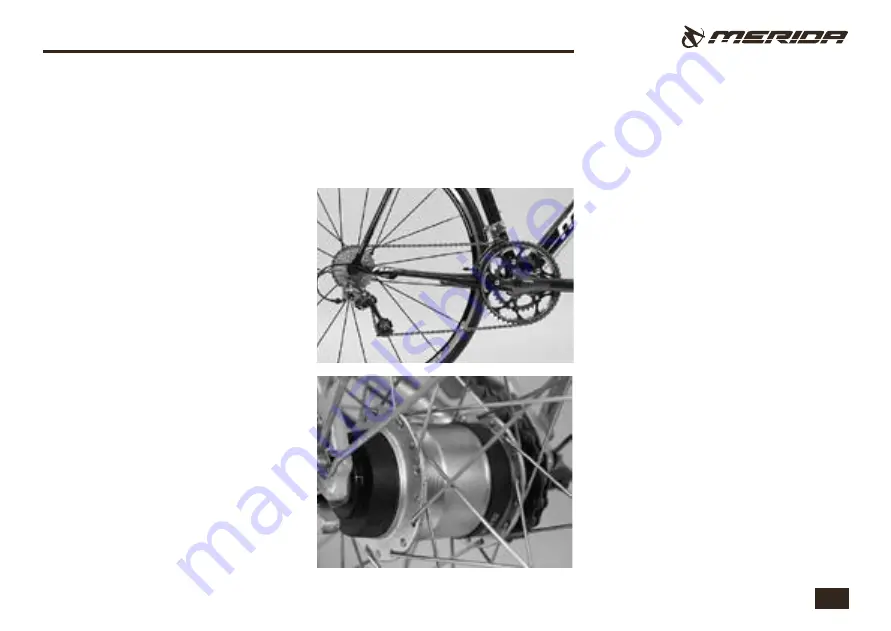
0. The gears
The gears
The gears on your bike serve to adjust your
pedalling power to the slope of the road,
wind conditions, and the desired speed. A
low gear (where in the case of derailleur
gears the chains runs on the small chainwheel
at the front and a large sprocket at the rear)
allows you to climb steep hills with moderate
pedalling force, but you also have to pedal
relatively fast.
High gears (large chainwheel at the front,
small sprocket at the rear) are for riding
downhill. Every turn of the pedals takes you
many metres forward at correspondingly
high speed.
On level ground your pedalling speed, also
referred to as cadence, should be higher than
60 strokes a minute. Racing cyclists pedal at
a rate between 90 and 110 strokes a minute
on level ground. When climbing uphill, your
cadence will naturally fall off somewhat. Your
pedalling should always remain fluent how-
ever.
Thee are two types of gears in general use:
The derailleur and the multi-speed hubs.
For more things to know about operation,
checking and maintenance, see the chapter
on your type of gears.
0. Derailleur gears
Derailleur gears are currently the most effec-
tive types of transmission for bikes. With spe-
cially designed sprocket teeth, flexible chains
and clearcut lever positions, gear shifting has
become very easy. Most systems nowadays
have an indicator on the handlebars showing
the currently used gear.
Modern bikes can have up to 30 gears. Using
gears, in which the chain runs extremely
oblique, reduces power transmission efficien-
cy and hastens wear of the chain. An unfa-
vourable run of the chain is when the smallest
chainwheel (front gearwheel) is being used
with one of the two or three outermost (small-
est) sprockets (rear gearwheels) or when the
largest chainwheel is being used with one of
the inmost (biggest) sprockets.
Always wear straight-cut trousers or use trou-
ser clips or the like to make sure your trou-
sers do not get caught in the chain or chain-
wheels.
















































